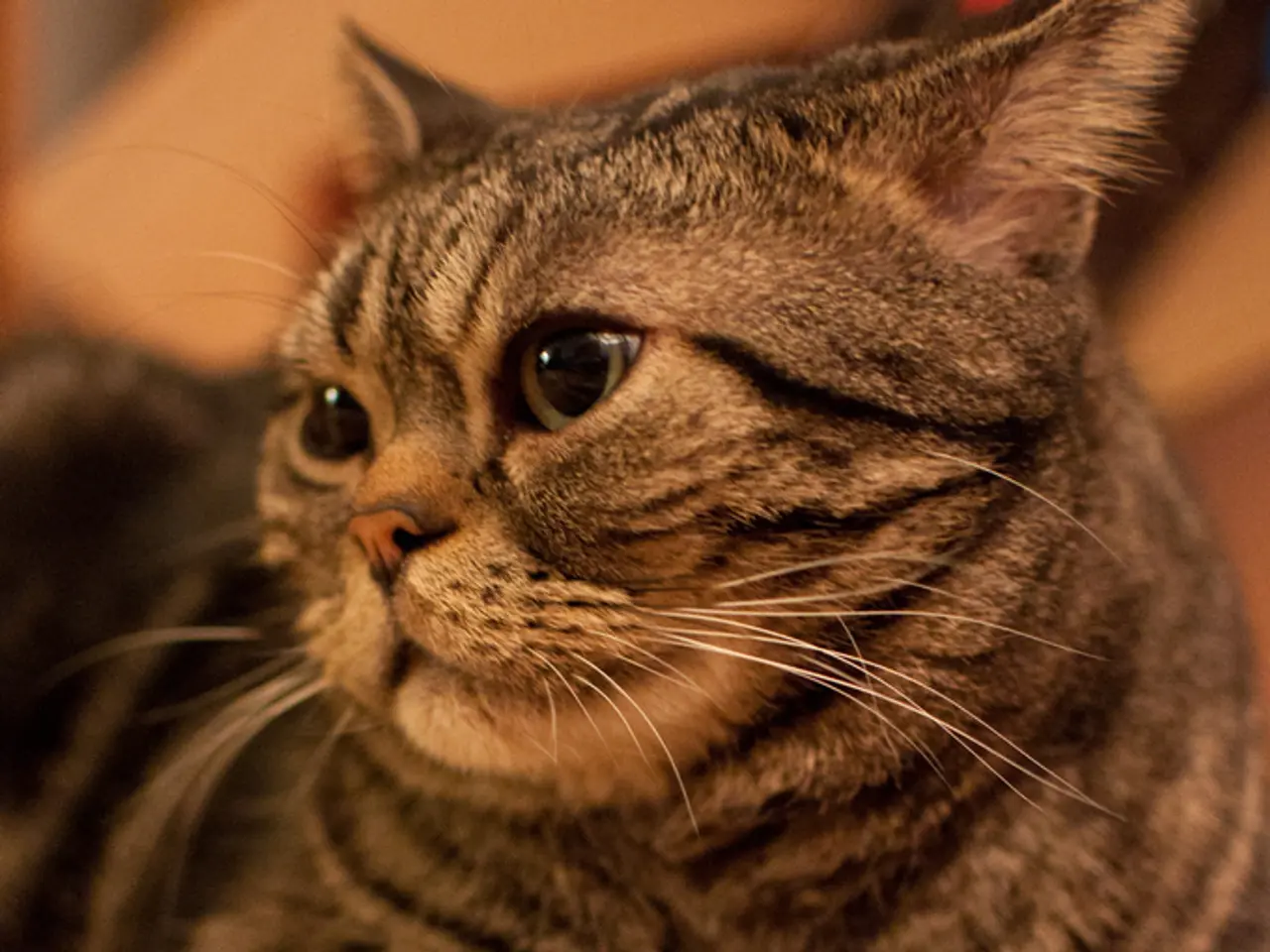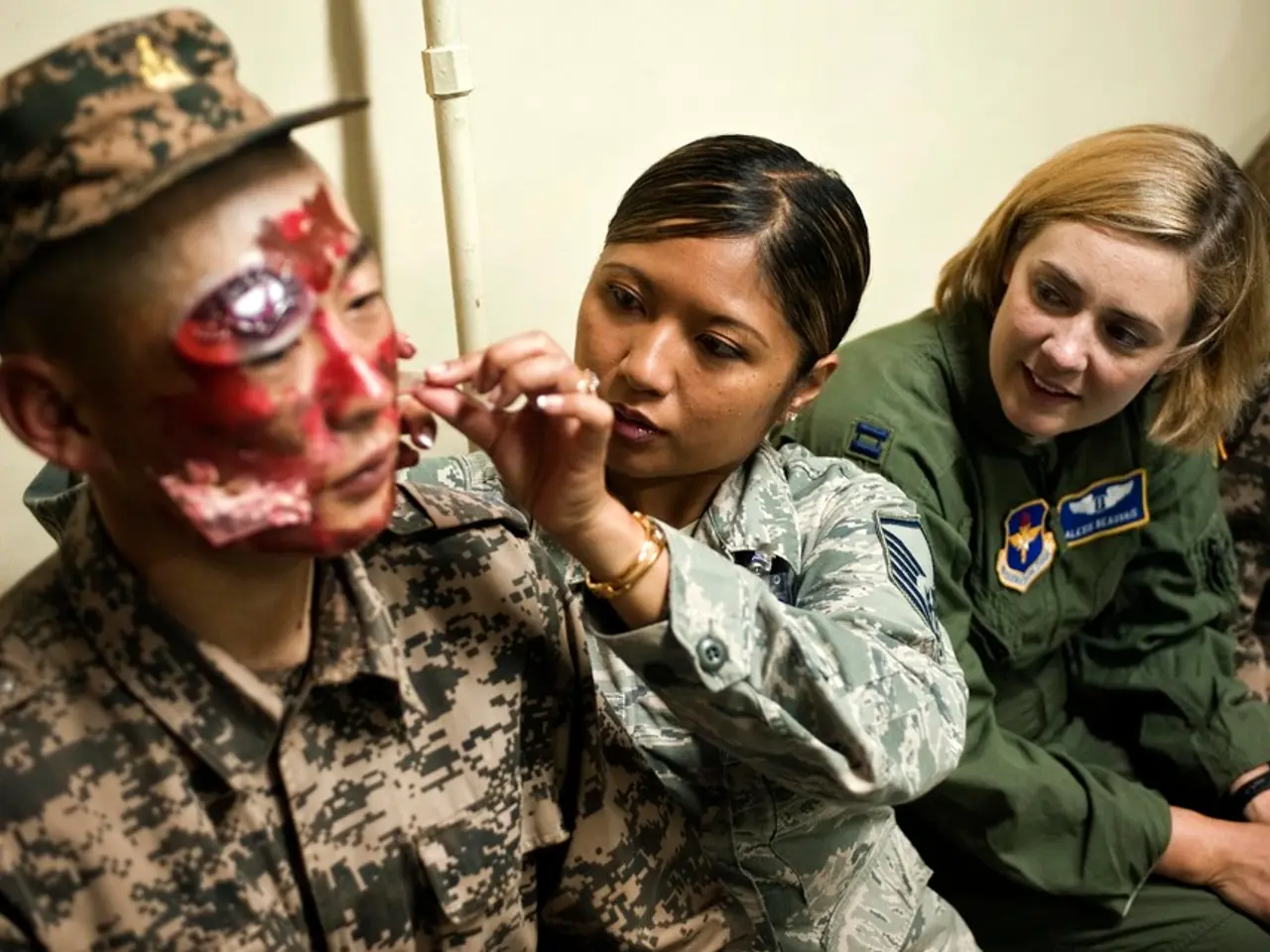Incorrect cat stroking: Common mistakes and tips for proper petting technique
In the world of feline companionship, understanding how to stroke your cat can significantly enhance the bond between you and your pet. Dr. Lauren Finka, a cat behavioral expert from Nottingham Trent University with over a decade's experience working academically with felines, provides valuable insights on this topic.
Cats are not inherently social or tactile species. Yet, they may tolerate being stroked due to the benefits a relationship with their owner provides. However, it's essential to remember that cats may not enjoy being stroked in the way humans prefer. That's why it's crucial to let the cat decide when to interact and respect their choice to move away at any time.
Most friendly cats will prefer being touched under their chin, around their cheeks, and at the base of their ears. These areas are intrinsically nice to be stimulated for cats, as they contain skin glands that produce scent. On the other hand, the cat's belly should be avoided when petting due to the protection of their vital organs.
By allowing the cat to have choice and control, paying close attention to its body language, and focusing your touch mainly on preferred areas like the head and ears, you can minimize negative behavioral responses and maximize enjoyment for both you and your cat. Stop frequently to check if the cat is still comfortable, avoid forcing interaction, and maintain a calm environment.
Subtle signs of annoyance or "negative arousal" in cats include sharply turning their head towards hands, freezing, stopping purring, rotated or flattened ears, nose licking, head shaking, sudden burst of grooming, rippled fur, a moving tail held horizontally or close to the ground, and vertical tail being associated with "positive arousal". When stroking the cat, briefly pausing every 3-5 seconds to 'check in' with the cat can help determine if they are enjoying the interaction.
Gently offering your hand to the cat and allowing them to approach you can help establish choice and control during interaction. Cats that are well-handled and socialized from a young age are more likely to enjoy handling. However, research suggests that stroking a cat at the base of its tail can produce negative behavioral responses. When it comes to stroking the cat, avoid the base of the tail and tummy, and be cautious then touching the cat's back, legs, and tail.
In summary, the best approach promotes the cat’s autonomy, attentiveness to their comfort signals, and gentle, trusting interaction to foster a mutual positive experience. By following these guidelines, you can create a trusting, respectful interaction that benefits both you and your cat.
Key Points:
- Allow the cat control over interaction and respect their choice to move away at any time.
- Watch for signals like tail flicking or sudden biting that indicate the cat wants you to stop.
- Stroke gently around the head, ears, and cheeks, areas many cats prefer, but avoid sensitive or disliked spots unless you know otherwise.
- Avoid excessive or continuous petting as some cats get overwhelmed quickly.
- Never force pets or restrain the cat, as this increases stress and negative responses.
- Create a quiet, calm setting, free of sudden noises that might startle your cat.
- Reinforce calm/stillness with treats and praise to create positive associations with petting.
[1] Dr. Lauren Finka, Nottingham Trent University [3] Various behavior and welfare projects with Battersea Dogs and Cats Home, International Cat Care (ICatCare), and International Society for Feline Medicine (ISFM)
- Dr. Lauren Finka's research at Nottingham Trent University provides valuable insights into improving the bond between humans and their feline pets.
- While cats are not social or tactile species by nature, they may tolerate being stroked for the benefits of their relationship with their owner.
- To minimize negative behavioral responses and maximize enjoyment, it's essential to allow the cat control during interaction, pay close attention to its body language, and focus your touch on preferred areas like the head and ears.
- A calm environment is crucial, as cats may show subtle signs of annoyance such as sharply turning their head towards hands, freezing, or nose licking.
- Gently offering your hand to the cat and establishing choice and control can help improve the interaction, especially for cats that are well-handled and socialized from a young age.
- It's important to avoid sensitive spots like the base of the tail and tummy when stroking a cat, as research suggests that these areas can produce negative behavioral responses.
- To create a trusting and positive experience, reinforce calm/stillness with treats and praise, and avoid forcing interaction, excessive or continuous petting, or sudden noises that might startle the cat.




